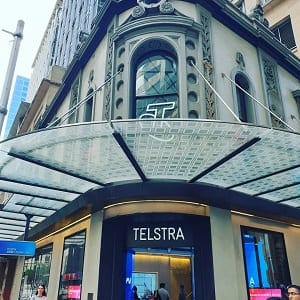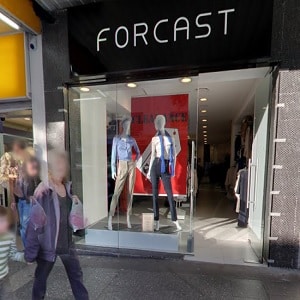Low E Glass

As a professional glazier in Sydney, I’ve worked with all sorts of glass for over 10 years. One type of glass that’s really changed the industry is Low E glass. I’ve used it in many projects, from houses to tall buildings. It helps make these buildings more energy efficient. In this article, I’m going to share what I’ve learned about Low E glass, including how it’s made, its benefits, and what to watch out for.
Table of Contents
What is Low E Glass & What Does it Do?
Low E glass, also known as low emissivity glass, is a type of energy efficient glass that is coated with a microscopically thin layer of metallic oxide. This coating reduces the amount of heat that is able to pass through the glass, making it an effective solution for improving a building’s energy efficiency.
Low E glass is different from traditional glass in that it has this special coating that reduces heat transfer. Traditional glass allows heat to easily pass through it, which can make a building less energy efficient. Low E glass, on the other hand, helps to reduce heat loss or gain, making it a more energy efficient and cost-effective option for buildings.
The benefits of using low E glass are numerous. In addition to improved energy efficiency, low E glass also offers UV protection, which can help to reduce fading of interior furnishings. It can also improve a building’s overall comfort level by reducing glare and regulating the amount of heat and light that enters the space. Overall, the use of low E glass can result in significant cost savings through reduced energy consumption.
How is Low E Glass Made?
The coating itself is typically made from a thin layer of metallic oxide, which is applied to the glass using a process known as sputtering. This process involves using a vacuum chamber to deposit the coating onto the glass in a controlled manner.
Once the low E coating has been applied, the glass is inspected for quality and durability. If it meets the necessary standards, it is then cut and packaged for distribution to manufacturers and building professionals who will use it in their construction projects. Overall, the process of making low E glass is highly technical and requires careful attention to detail to ensure the highest quality end product.
Advantages of Low E Glass
Reduced Energy Bills: If you’re tired of high energy bills, Low E glass can be a game-changer. By reducing heat loss or gain, it can help your building become more energy efficient, leading to significant cost savings over time.
Protection for Your Interiors: The UV protection offered by Low E glass not only safeguards your skin but also protects your furniture and fabrics from fading. You can preserve the vibrant colors and condition of your interior décor for a longer time.
Enhanced Comfort: Are you bothered by the glare on your television screen or computer monitor? The coating on Low E glass can help to reduce glare, making your home or office a more comfortable environment.
Long-lasting Windows: For those looking for durable options, certain types of Low E glass can be a great choice. The coating on these glasses is highly durable, helping the glass withstand harsher environments and extending its lifespan.
Disadvantages of Low E Glass
Higher Initial Cost: If you’re on a tight budget, you might find Low E glass to be more expensive upfront than traditional glass. However, it’s worth considering the potential energy savings over time, which could offset the initial cost.
Slightly Altered View: Love looking out through crystal clear windows? The low E coating might slightly alter the visibility through the glass, but many find this a small trade-off for the energy savings and increased comfort.
Requires Careful Installation: If you’re planning on installing the windows yourself, bear in mind that Low E glass needs to be handled with care to avoid damaging the coating. It might be beneficial to hire professionals for installation.
Not Always Readily Available: If you need the glass quickly for a project, note that Low E glass might not be as readily available as traditional glass in some areas. So, plan accordingly to avoid delays in your project.”
Different Types of Low E Glass
There are two main types of low E glass available: soft coat and hard coat. As their names suggest, the main difference between these two types of low E glass is the hardness of the coating that is applied to the glass.
| Feature | Soft Coat Low E Glass | Hard Coat Low E Glass |
|---|---|---|
| Coating Process | Pyrolysis (heating glass to high temperatures) | Sputtering (using a vacuum chamber) |
| Coating Texture | Soft, pliable | Hard, durable |
| Cost | Typically more affordable | May be more expensive |
| Visible Light Reflectance | Lower, better for aesthetics | Higher |
| Durability | Less durable | More durable |
| Lifespan | Shorter compared to hard coat | Longer, suitable for harsh environments |
| Best Suited For | Aesthetically focused applications | Harsher environments or high-traffic areas |
Soft coat low E glass, also known as “pyrolytic” low E glass, has a coating that is applied to the glass using a process called pyrolysis. This process involves heating the glass to high temperatures, which causes the coating to bond directly to the surface of the glass. The resulting coating is relatively thin and has a soft, pliable texture.
Hard coat low E glass, on the other hand, has a coating that is applied using a different process known as “sputtering.” This process involves depositing the coating onto the glass using a vacuum chamber, resulting in a much harder and more durable coating.
Both types of low E glass have their own benefits and drawbacks. Soft coat low E glass is typically more affordable and has a lower visible light reflectance, making it a good option for applications where aesthetics are important. Hard coat low E glass, on the other hand, is more durable and has a longer lifespan, making it a better choice for harsher environments or high-traffic areas. Ultimately, the type of low E glass that is best suited to a particular application will depend on the specific needs and requirements of the project.
Understanding U-Value and SHGC in Low E Glass
In Australia, when selecting Low E Glass for your project, two important factors to consider are U-Value and Solar Heat Gain Coefficient (SHGC).
The U-Value measures the rate of heat transfer through a window—basically, how well the window insulates. Lower U-Values mean better insulation, so for energy efficiency, you want a lower U-Value. Australian standards require a U-Value of 3.8 W/m²K or less for residential windows in colder climates, though in hotter areas, a higher U-Value may be acceptable.
The SHGC measures how much solar radiation (and thus, heat) a window lets in. A lower SHGC means less solar heat gain, which is beneficial in warmer climates where you want to limit heat coming in. In contrast, a higher SHGC can be advantageous in colder climates, where you might want to harness solar heat to warm your home.
Remember, the ideal U-Value and SHGC depend on your specific needs and the local climate. Be sure to consult with a local glazing professional or a window energy rating scheme (WERS) expert to make the best choice for your project.
Environmental Impact and the 7-Star Energy Rating in Australian Homes
Low E Glass FAQ
Does the low E coating on Low E Glass go on the inside or outside?
The positioning of the Low-E coating depends on your local climate. For instance, in warmer climates like Brisbane, Australia, where the aim is to keep heat out, the Low-E coating should be applied to the exterior pane of glass. In contrast, in cooler climates like Melbourne, where the goal is to keep heat in, it’s better to have the Low-E coating on the inside pane of glass.
Can Low E coating be removed?
Removing the Low-E coating isn’t feasible as it’s a microscopically thin layer of metal or metallic oxide vacuum-deposited onto the surface of the glass. Attempting to remove it would damage the glass. For example, if you were trying to remove the coating from a window pane, you’d end up scratching or even breaking the glass.
Which is better Low-E or double glazing?
Choosing between Low-E glass vs double glazing depends on several factors, including your location and specific needs. For example, in regions like Northern Territory, where direct sunlight can make interiors uncomfortably hot, Low-E glass, which reflects more heat, might be a better choice. Conversely, in colder, humid climates like Tasmania, double glazing, which is more effective in reducing heat transmission through the surrounding atmosphere, could be more beneficial.
What Our Clients Say About Low E Glass
To help you understand the real-world benefits of Low E Glass, we’ve collected a few testimonials and case studies from our clients who have seen a significant difference after installation:
Case Study: Residential Home in Clovelly NSW John Smith, a homeowner in Sydney, decided to install Low E glass in his home. He reported, “The improvement was immediately noticeable. Our home was much cooler in summer and warmer in winter. Plus, our energy bills went down by nearly 30%. I’d definitely recommend Low E glass to anyone looking to make their home more energy-efficient.”
Case Study: Telstra Sydney, 400 George st, Sydney CBD Doug Hall oversaw the installation of Low E glass in an office building. He said, “We’ve seen a remarkable improvement in our employees’ comfort. The Low E glass significantly reduced glare, making it easier for our team to work on their computers. Also, our energy consumption dropped considerably.”

Case Study: Forcast Store, Burwood NSW Judy Olbes, a retail store manager, shared her experience: “After installing Low E glass, we noticed our merchandise was not fading as quickly due to reduced UV exposure. Our customers also commented on the pleasant temperature in our store. It was an investment well made.”


Khalil is the owner of Splendid Window Glass Repairs and has over 8 years experience as a glazier specialising in window glass repair, replacement and installations. Khalil takes great pride in his work and prides himself on providing an excellent service to all of his customers, no matter how big or small the job may be.
